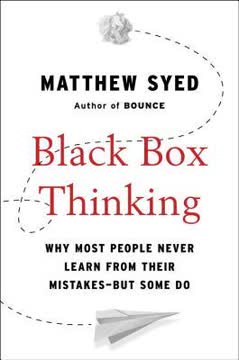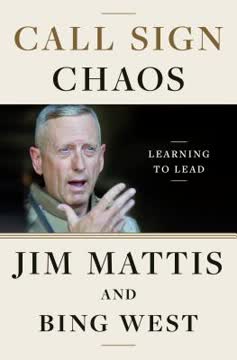Key Takeaways
1. Gravitas is a learnable skill, not an innate trait
Gravitas is for everybody. If you have a zone of real expertise and learn to express it with authority, then gravitas is within your grasp.
Debunking the myth. Gravitas, often perceived as an innate quality possessed by a select few, is actually a learnable skill accessible to anyone willing to develop it. This transformative insight empowers individuals to cultivate their own gravitas, regardless of their background or current position.
Components of gravitas. At its core, gravitas comprises three key elements:
- Knowledge: Expertise in your field
- Purpose: Clear values and goals
- Passion: Genuine enthusiasm for your work
Developing gravitas. To cultivate gravitas:
- Identify your areas of expertise
- Clarify your values and goals
- Practice expressing your ideas with confidence
- Observe and learn from those who demonstrate gravitas
- Seek feedback and continuously refine your approach
2. Knowledge, purpose, and passion form the gravitas equation
Knowledge + purpose + passion (– anxiety) = Gravitas
Understanding the equation. The gravitas equation provides a framework for developing and expressing gravitas. Each component plays a crucial role in creating a powerful presence:
- Knowledge: Deep understanding of your subject matter
- Purpose: Clear vision and values that guide your actions
- Passion: Genuine enthusiasm that inspires others
- Anxiety reduction: Techniques to manage nervousness and project confidence
Balancing the components. Effective gravitas requires a harmonious blend of these elements. Over-relying on knowledge without passion can lead to dry, uninspiring communication. Conversely, passion without knowledge may lack substance and credibility.
Practical application. To apply the gravitas equation:
- Continuously expand your knowledge through learning and experience
- Regularly reflect on your purpose and values
- Find ways to connect with and express your passion for your work
- Develop anxiety management techniques, such as deep breathing and visualization
3. Balance status and connection to command respect and likability
Status and connection are traits. You can change them if you wish. The art when it comes to style is to be able to flex.
The status-connection continuum. Gravitas requires a delicate balance between projecting authority (status) and building rapport (connection). Understanding how to navigate this spectrum allows you to adapt your communication style to different situations and audiences.
Four archetypes for flexibility:
- King/Queen: Wise, reasoned, objective
- Warrior: Drives change, action-focused, challenging
- Carer: Supportive, empathetic, builds a team
- Creator: Humorous, original, inspirational
Adapting your style. To effectively balance status and connection:
- Assess the situation and audience expectations
- Choose the appropriate archetype or blend of archetypes
- Practice shifting between styles in low-stakes situations
- Pay attention to body language, voice tone, and word choice
- Seek feedback on how you're perceived in different contexts
4. Find your authentic voice through self-reflection and practice
Finding a voice means that you can get your feeling into your own words, and that your words have the feel of you about them.
Discovering authenticity. Your authentic voice is the unique expression of your thoughts, feelings, and experiences. It forms the foundation of your gravitas and allows you to communicate with genuine authority and impact.
Techniques for finding your voice:
- Journaling: Write daily to explore your thoughts and feelings
- Reading widely: Expose yourself to diverse perspectives and writing styles
- Speaking practice: Record yourself speaking on various topics
- Feedback: Seek input from trusted friends or mentors
- Reflection: Regularly assess what feels true and authentic to you
Refining your voice. Once you've identified your authentic voice:
- Practice expressing complex ideas simply and clearly
- Develop a personal style that feels natural and engaging
- Learn to adapt your voice to different contexts while maintaining authenticity
- Continuously refine your communication skills through deliberate practice
5. Master the art of speaking with impact and authority
People who come across as knowledgeable, authoritative and thoughtful clearly listen to the question. It is evident in the way they animate their face. They're actually listening, they're not waiting to get their first point in. All of them pause.
Key elements of impactful speaking:
- Clarity: Express ideas concisely and logically
- Tone: Use a confident, resonant voice
- Pacing: Speak at a measured, deliberate pace
- Pausing: Use strategic pauses for emphasis and reflection
- Body language: Maintain open, confident posture
Techniques for improvement:
- Practice deep breathing to support a strong, relaxed voice
- Record yourself speaking and analyze your performance
- Use short, clear sentences to enhance understanding
- Develop a repertoire of stories and examples to illustrate points
- Learn to modulate your voice for emphasis and engagement
Mastering the pause. Effective use of pauses:
- Demonstrates thoughtfulness and control
- Allows listeners to absorb information
- Creates anticipation and emphasis
- Provides time for you to gather your thoughts
6. Win hearts and minds by balancing logic with emotion
Whatever you feel, they feel.
The power of emotion. While logical arguments are important, emotional connections often drive decision-making and inspire action. Balancing logic and emotion allows you to engage both the hearts and minds of your audience.
Techniques for emotional engagement:
- Share personal stories that illustrate your points
- Use vivid language and imagery to create emotional impact
- Express genuine passion for your subject matter
- Acknowledge and validate the emotions of your audience
- Use analogies and metaphors to make complex ideas relatable
The dramatic arc. Structure your communication using the dramatic arc to create emotional engagement:
- Inciting event: Introduce a compelling problem or situation
- Rising action: Build tension and interest
- Climax: Present the key insight or solution
- Falling action: Explain implications and next steps
- Resolution: Summarize and call to action
7. Maintain an open mind and level head in challenging situations
Make the golden rule your gravitas mantra. More problems in life are caused because we take offence than by others giving offence.
The importance of emotional regulation. Maintaining composure in difficult situations is crucial for projecting gravitas and effectively managing challenges. Developing this skill allows you to respond thoughtfully rather than react impulsively.
Strategies for maintaining composure:
- Practice mindfulness to increase self-awareness
- Develop empathy to understand others' perspectives
- Use the "pause-breathe-respond" technique in tense moments
- Reframe negative situations as opportunities for growth
- Cultivate a growth mindset to approach challenges positively
Dealing with difficult behaviors. Recognize and respond effectively to four common problematic behaviors:
- Blamer: Deflects responsibility onto others
- Placator: Tries to please everyone at their own expense
- Computer: Hides behind logic and facts
- Distractor: Changes the subject to avoid issues
To address these behaviors, maintain your composure, seek to understand the underlying fears or needs, and guide the interaction towards constructive problem-solving.
8. Prepare thoroughly and deliver with confidence in key professional moments
Gravitas in presentation is the former; knowledge, purpose and passion carefully chosen and packaged for your audience. You don't overwhelm them with lots of cheap tat. You give them one small, thoughtfully chosen and beautifully wrapped gem that they can enjoy for many years to come.
Preparation is key. Thorough preparation allows you to present with confidence and authenticity in important professional situations such as presentations, meetings, interviews, and media appearances.
Essential preparation steps:
- Research your audience and context
- Clarify your key messages and supporting points
- Develop engaging stories and examples
- Anticipate potential questions or challenges
- Practice delivery, including body language and voice modulation
- Prepare mentally through visualization and positive self-talk
Delivery techniques for various contexts:
- Presentations: Use clear structure, engage with the audience, and manage energy levels
- Meetings: Listen actively, contribute thoughtfully, and facilitate productive discussions
- Interviews: Stay focused, provide concise answers, and showcase your unique value
- Media appearances: Project energy, speak in sound bites, and maintain composure
Remember, the goal is not perfection but authentic, impactful communication that showcases your knowledge, purpose, and passion while serving the needs of your audience.
Last updated:
FAQ
What's "Gravitas: Communicate with Confidence, Influence and Authority" by Caroline Goyder about?
- Core Concept: The book explores the concept of gravitas, which is defined as dignity, presence, influence, and authority in communication.
- Purpose: It aims to teach readers how to communicate effectively with confidence and authority, making others listen and respect them.
- Practical Techniques: The book provides practical techniques and exercises to help readers develop their natural gravitas for better presentations, meetings, and public speaking.
- Professional Growth: It is positioned as an essential tool for success in the modern workplace, helping individuals transform their communication skills.
Why should I read "Gravitas: Communicate with Confidence, Influence and Authority"?
- Enhance Communication Skills: The book offers strategies to improve how you express yourself, making your communication more impactful.
- Build Confidence: It provides techniques to overcome anxiety and speak with authority, which can boost your confidence in professional settings.
- Influence and Persuasion: Learn how to engage and influence your audience effectively, which is crucial for leadership and career advancement.
- Practical Application: The book includes actionable tips and exercises that can be applied immediately to real-life situations.
What are the key takeaways of "Gravitas: Communicate with Confidence, Influence and Authority"?
- Gravitas Equation: Knowledge + Purpose + Passion (– Anxiety) = Gravitas. This formula is central to developing presence and authority.
- Seven Principles: The book outlines seven principles of gravitas, including knowing yourself, teaching people how to treat you, and finding your voice.
- Balance of Forces: Gravitas requires a balance between seriousness and lightness, authority and approachability.
- Continuous Growth: Gravitas is not fixed; it can be developed and enhanced over time with practice and self-awareness.
How does Caroline Goyder define gravitas in her book?
- Roman Origin: Gravitas is a Roman word that translates to dignity, impressiveness, seriousness, influence, weight, and presence.
- Balance of Forces: It involves a balance between being grounded (roots) and being light and approachable (wings).
- Learnable Trait: Gravitas is seen as a trait that can be developed through practice, rather than an innate quality.
- Professional Presence: It is considered a core characteristic of professional presence, crucial for success in the workplace.
What is the Gravitas Equation mentioned in the book?
- Components: The equation is Knowledge + Purpose + Passion (– Anxiety) = Gravitas.
- Knowledge: Represents expertise and authority in a specific area.
- Purpose: Involves having clear values and serving a greater good.
- Passion: The enthusiasm and energy that engage and inspire others.
What are the Seven Principles of Gravitas according to Caroline Goyder?
- Know Yourself: Develop self-awareness and inner strength.
- Teach People How to Treat You: Balance status and connection to earn respect.
- Find Your Voice: Communicate with originality and clarity.
- Speak So Others Listen: Use impact, authority, and power in speech.
- Win Hearts and Minds: Inspire and engage your audience.
- Keep an Open Mind and a Level Head: Be understanding and influential.
- Get Results: Achieve success through strategic action.
How can I apply the Gravitas Equation in my daily life?
- Identify Your Expertise: Focus on areas where you have strong knowledge and can speak with authority.
- Clarify Your Values: Align your communication with your core values and purpose.
- Express Passion: Let your enthusiasm for your subject matter shine through in your interactions.
- Manage Anxiety: Use techniques to reduce anxiety and maintain composure in high-pressure situations.
What practical exercises does the book suggest for developing gravitas?
- FOFBOC Exercise: Focus on grounding yourself by feeling your feet on the floor and your bum on the chair.
- Morning Pages: Write freely each morning to find your authentic voice.
- Visualization: Imagine successful outcomes to build confidence and clarity.
- Role-Playing: Practice different communication styles to become more adaptable.
What are some of the best quotes from "Gravitas: Communicate with Confidence, Influence and Authority" and what do they mean?
- "Gravitas is about roots and wings." This quote emphasizes the balance between being grounded and being light and approachable.
- "Knowledge + Purpose + Passion (– Anxiety) = Gravitas." This formula encapsulates the core components needed to develop gravitas.
- "We can all have gravitas when we speak." It suggests that gravitas is accessible to everyone, not just a select few.
- "Practice isn’t the thing you do when you’re good. It’s the thing you do that makes you good." This highlights the importance of continuous practice in developing gravitas.
How does Caroline Goyder suggest overcoming anxiety in communication?
- Breathing Techniques: Use deep breathing to calm nerves and maintain composure.
- Visualization: Picture successful outcomes to reduce anxiety and build confidence.
- Preparation: Thoroughly prepare and practice to feel more in control and less anxious.
- Mindset Shift: Reframe nerves as excitement to harness their energy positively.
What role does emotional intelligence play in developing gravitas according to the book?
- Understanding Emotions: Recognize and manage your emotions to communicate more effectively.
- Empathy: Develop the ability to understand and relate to others' emotions, enhancing connection and influence.
- Emotional Balance: Balance logic and emotion to engage and persuade your audience.
- Self-Regulation: Control emotional responses to maintain authority and presence in challenging situations.
How can "Gravitas: Communicate with Confidence, Influence and Authority" help in professional growth?
- Leadership Skills: Develop the authority and presence needed for effective leadership.
- Career Advancement: Use gravitas to stand out in meetings, presentations, and interviews.
- Influence and Persuasion: Learn to engage and inspire others, crucial for career success.
- Communication Mastery: Gain practical skills to communicate with confidence and clarity in any professional setting.
Review Summary
Gravitas receives mostly positive reviews, with readers praising its practical advice on communication, public speaking, and personal development. Many find the book's tips and exercises helpful for improving confidence and presence. Some reviewers appreciate the author's blend of historical context and modern techniques. While a few critics find the content basic or obvious, most readers value the book's insights on developing gravitas in professional and personal settings. The audiobook narration by the author is also well-received.
Similar Books









Download PDF
Download EPUB
.epub digital book format is ideal for reading ebooks on phones, tablets, and e-readers.




